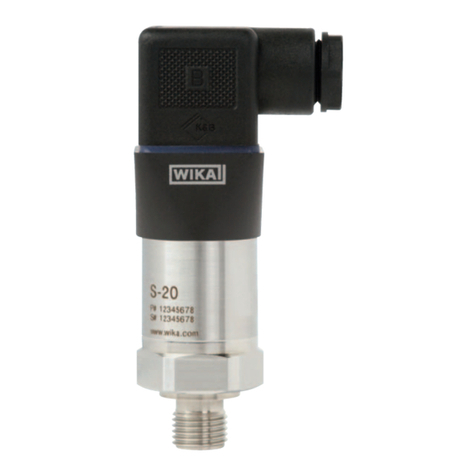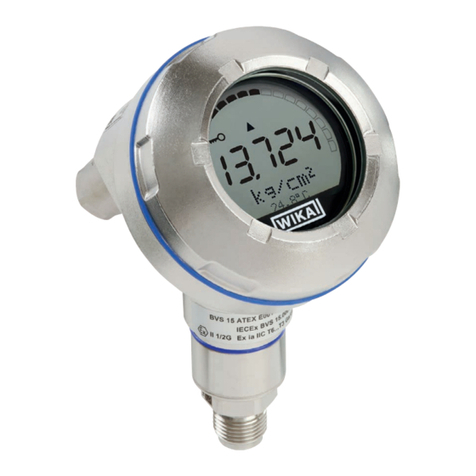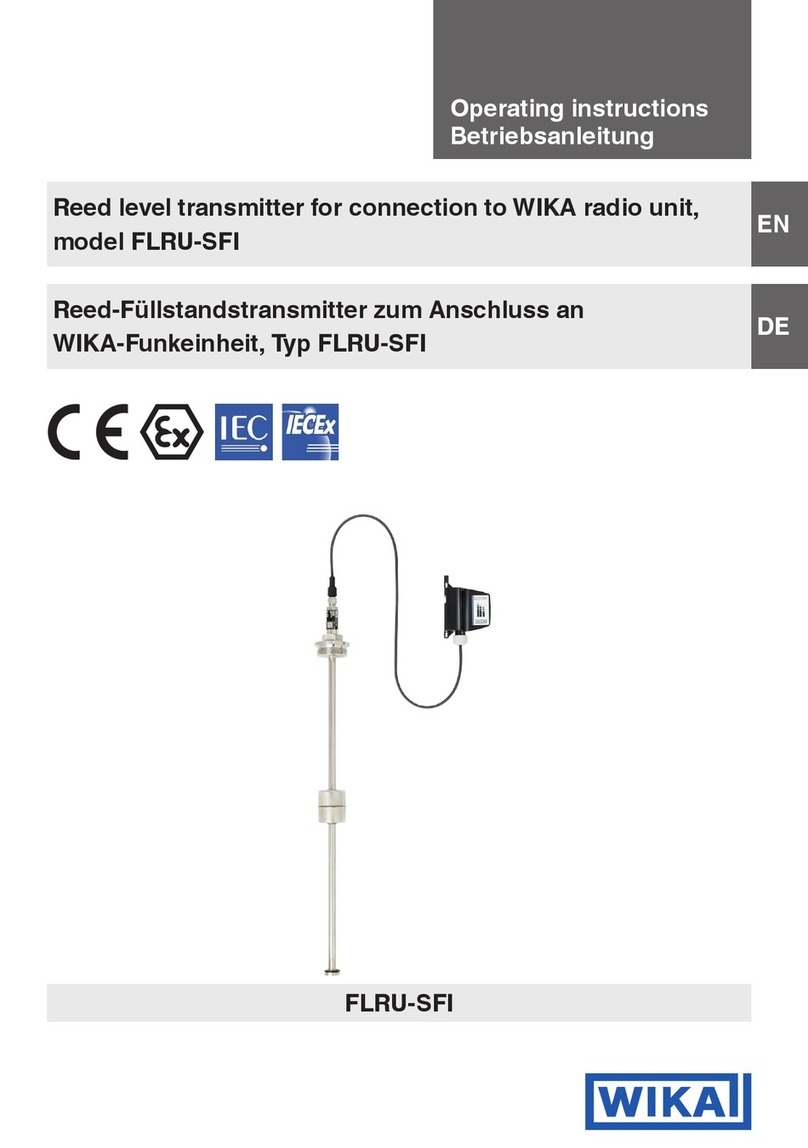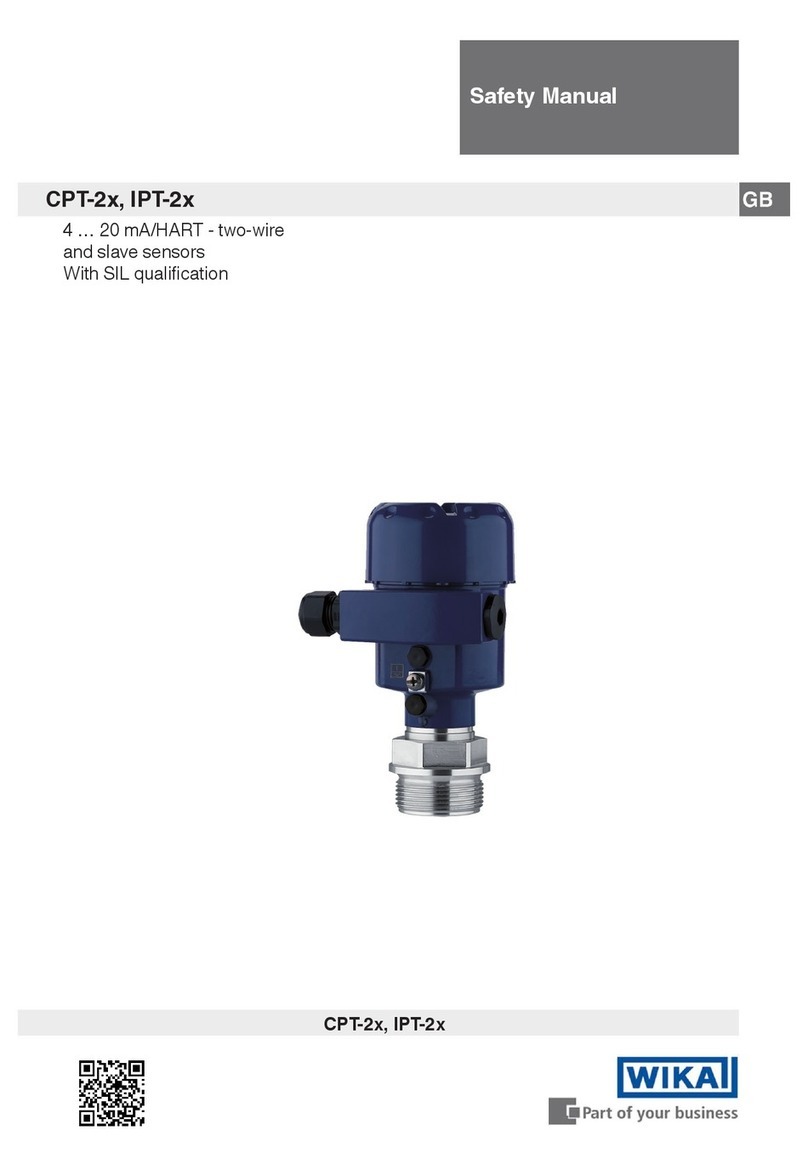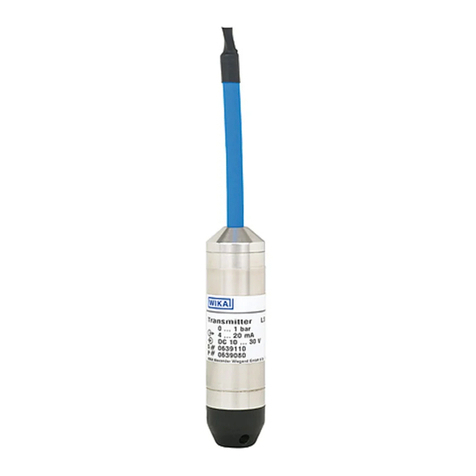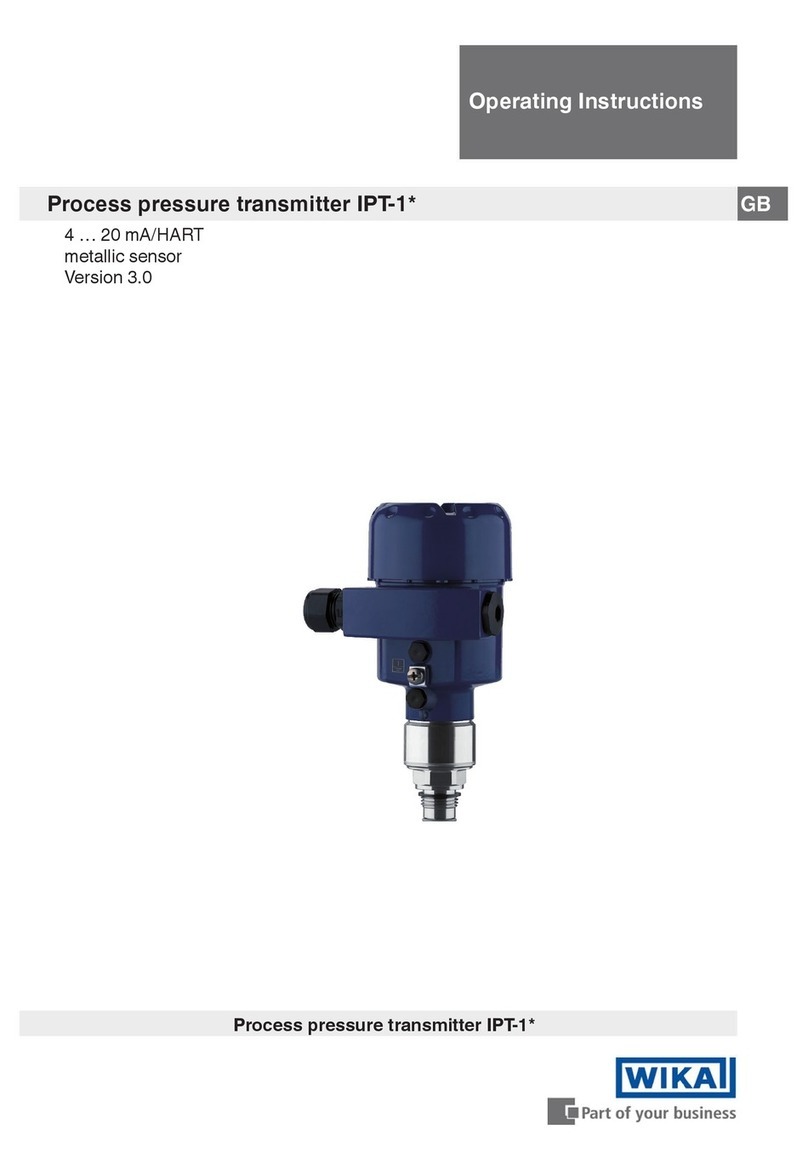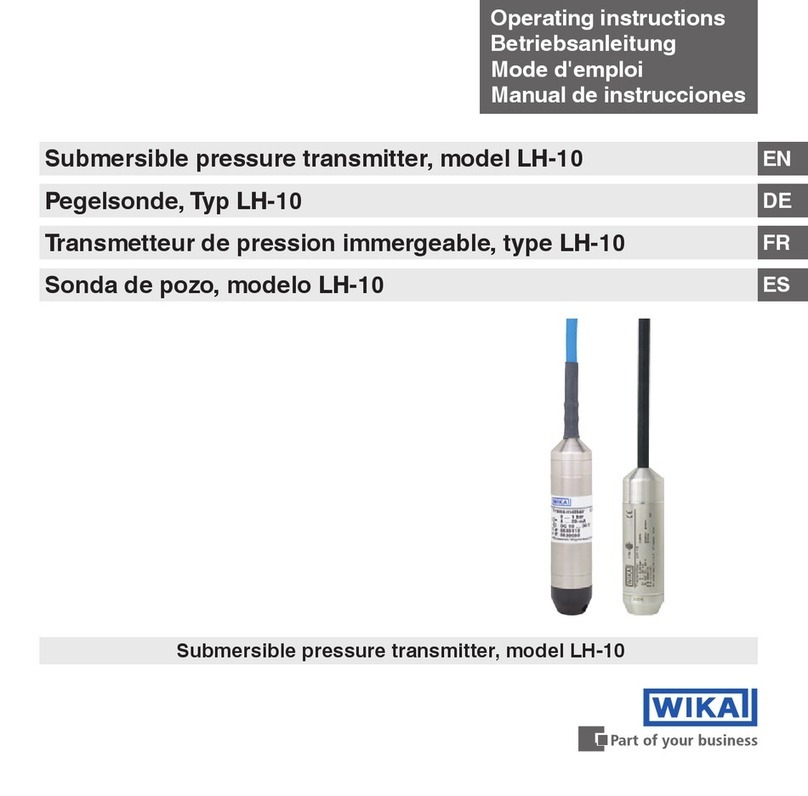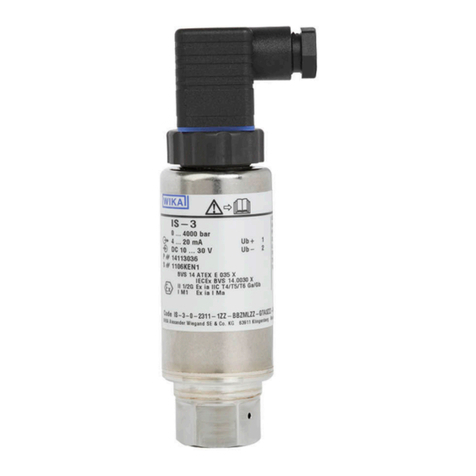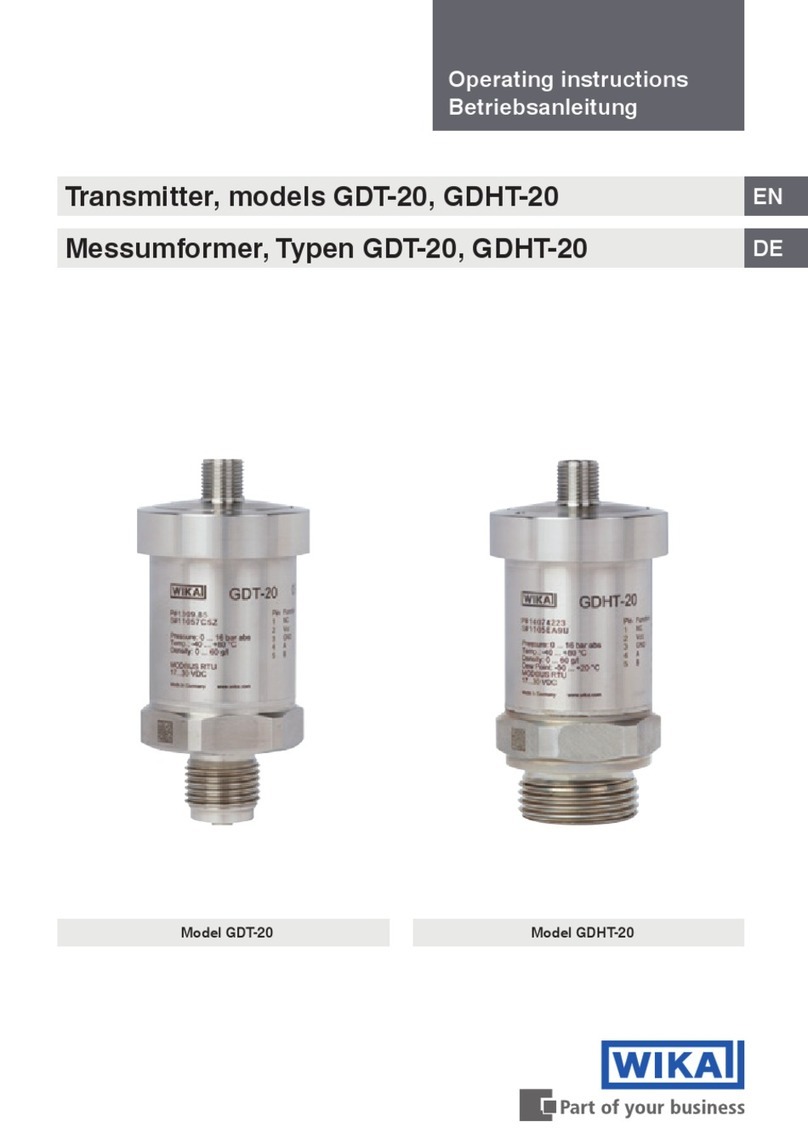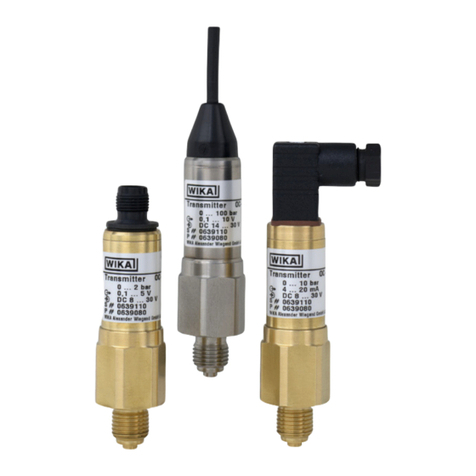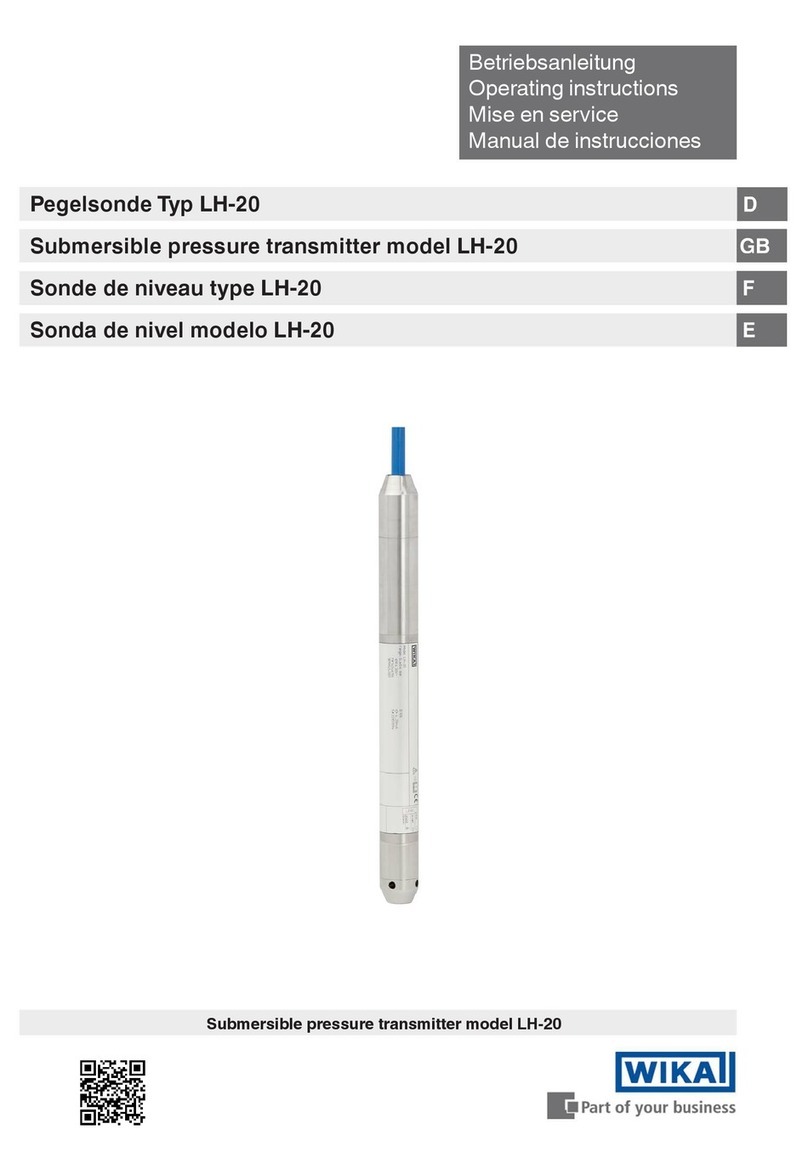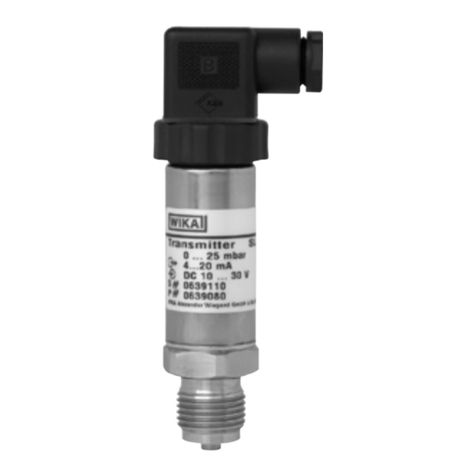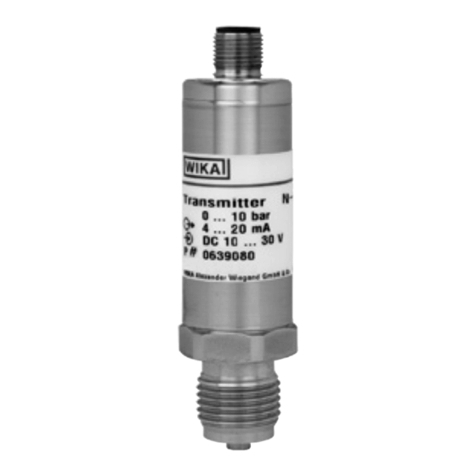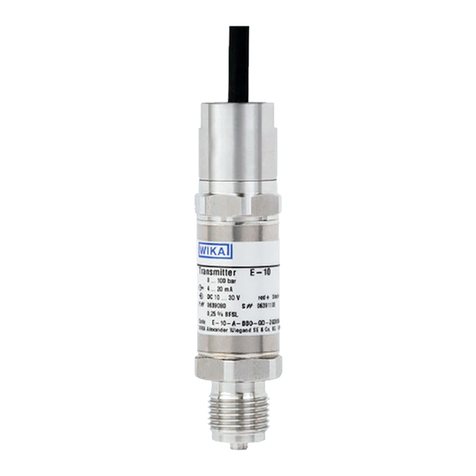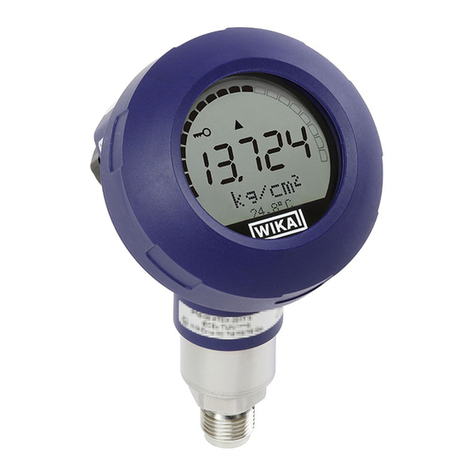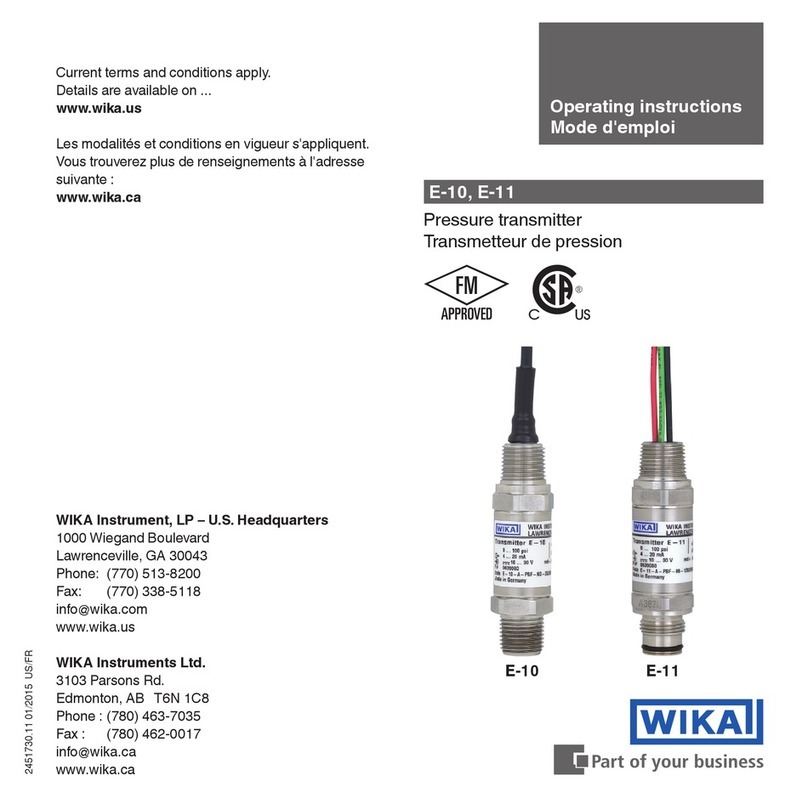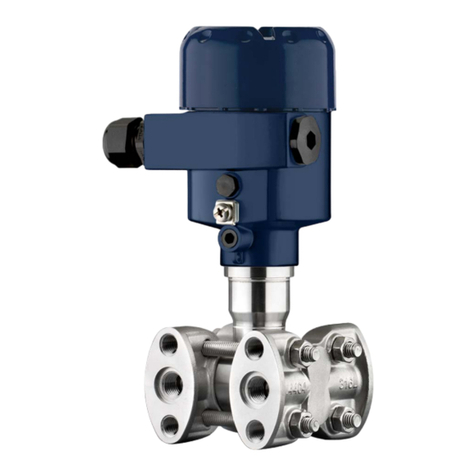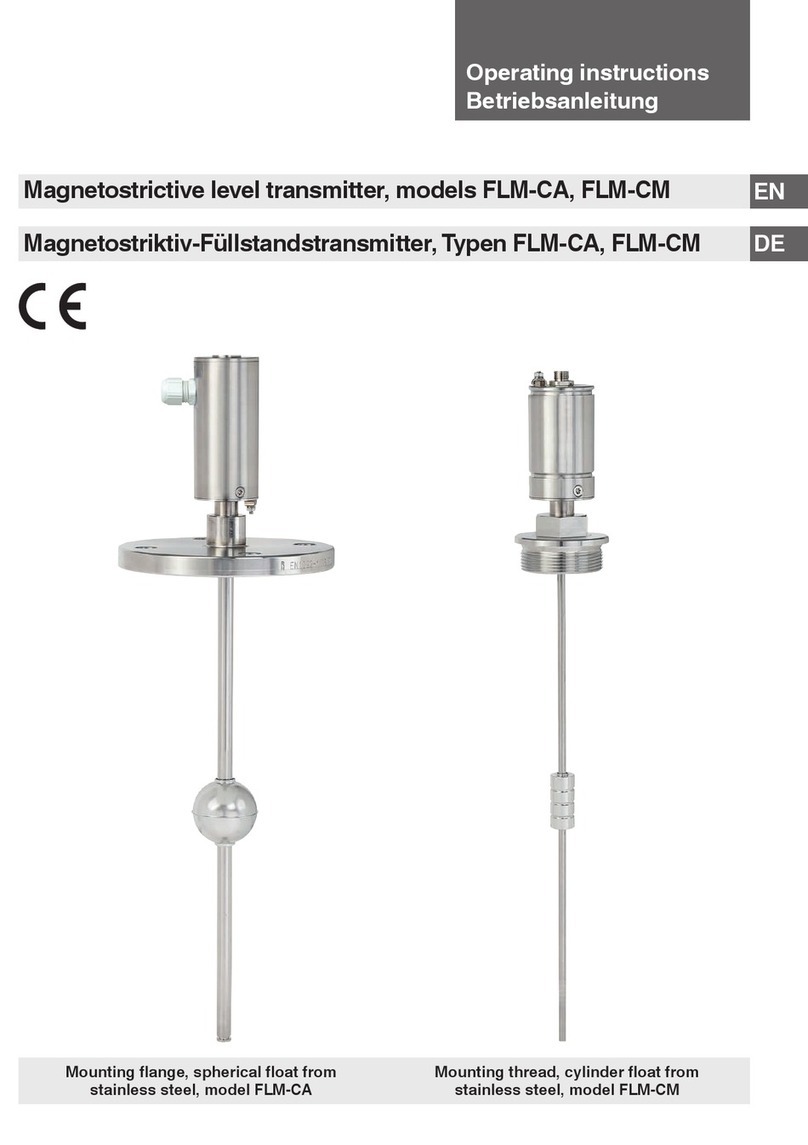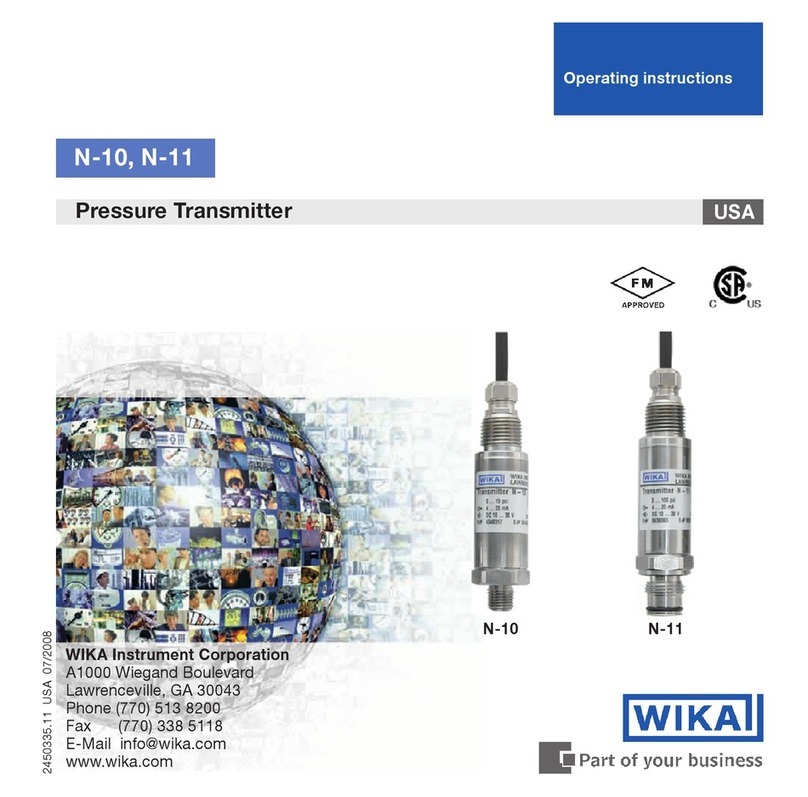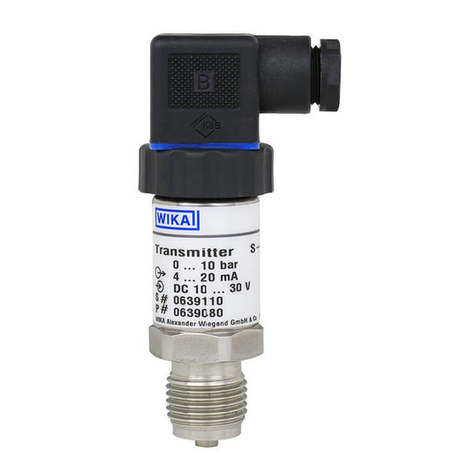
GB
8. Technical data
Technical data DELTA-trans, Model 891.34.2189
Differential measuring range bar 0 ... 0.16 to 0 ... 25
Working pressure (stat.) max. bar 25
Overload value either side max.
bar 25
Pressure connections exposed
to medium
2 x G ¼ female, bottom, in-line, centre distance 26 mm (optional: other
pressure connections male or female or compression fitting with ferrule for
pipe Ø 6, 8 or 10 mm respectively)
Pressure media chamber
exposed to medium
GD-AlSi 12 (Cu) 3.2982, black painted (optional GD-AlSi 12 (Cu) HARD-COAT
surface protection or stainless steel)
Press. element comp. spring stainless steel 1.4310 or FD SiCr EN 10 270-2
Press. element separ. diaphr. FPM/FKM fabric back stay (optional NBR)
Links stainless steel 1.4305, FPM/FKM (optional NBR)
Sealing rings FPM/FKM (optional NBR)
Press. equalising valve
(optional)
stainless steel and FPM/FKM
4-way valve manifold
(optional)
Cu-alloy or stainless steel, 1x Press. equalising valve, 2 x gauge valve,
1 x valve for purging or air bleeding
Power supply UBDC V 10 <UB≤30 (optional LCD-display 14 <UB≤30)
Permissible residual ripple ≤0.1 % of span/10 V
Supply voltage effect % ss ≤10
Output signal and permissible
max. load RA
4 … 20 mA, 2-wire system RA≤(UB- 10 V) / 0.02 A with RAin Ohm and UBin Volt
0 … 20 mA, 3-wire system RA≤(UB- 10 V) / 0.02 A with RAin Ohm and UBin Volt
Effect of load % of span ≤0.1
Response time s approx. 1 (optional approx. 50 ms)
Output signal adjustment
Zero point, electrical% of span ± 15
Span, electrical% of span ± 30
Linearity % of span 2.5 (limit point calibration)
(including hysteresis) optional 1.6 (limit point calibration)
Permissible
Medium temperature°C +80 maximum
Ambient temperature°C -10 … +60 (optional LCD-display 0 … 50)
Compensated temp. range °C -10 … +60 (optional LCD-display 0 … 50)
Temperature coefficient in
compensated temp. range
Average TKon zero point≤0.4 % of span/10 K
Average TKon span≤0.4 % of span/10 K
LCD-display (optional)
Voltage loadDC V 3.5
Display3 ½-digit, height 12.7
Ambient temperature°C 0 … 50
Storage temperature°C -10 … +80
Wiring Terminal box (screw terminals up tu 2.5 mm²)
Wiring protection Protected against reverse polarity and overvoltage
EMC (electro-magnetic
compatibility)
Interference emission per EN 50 081 - 1 (March 93) and EN 50 081 - 2 (March 94),
Interference immunity per EN 50 082 - 2 (March 95)
Ingress protection IP 54 (optional IP 65) according EN 60 529 / IEC 529
Weight kg approx. 1.3
2279453 08/2009 GB/D/F
WIKA Operating Instructions Differential Pressure Transmitter DELTA-trans 9
8. Technical data






